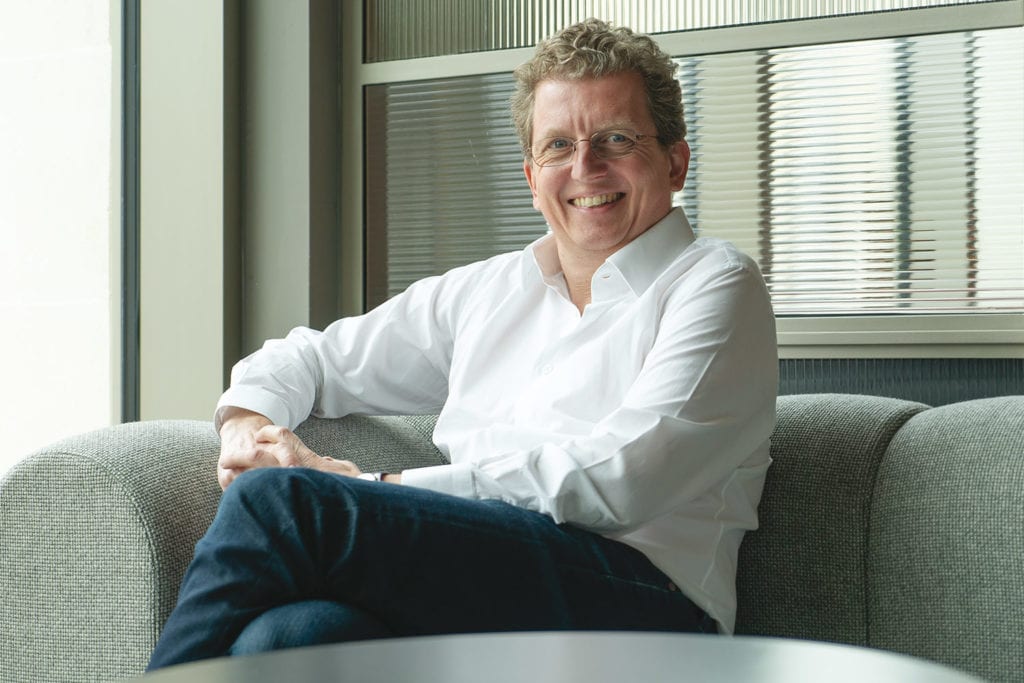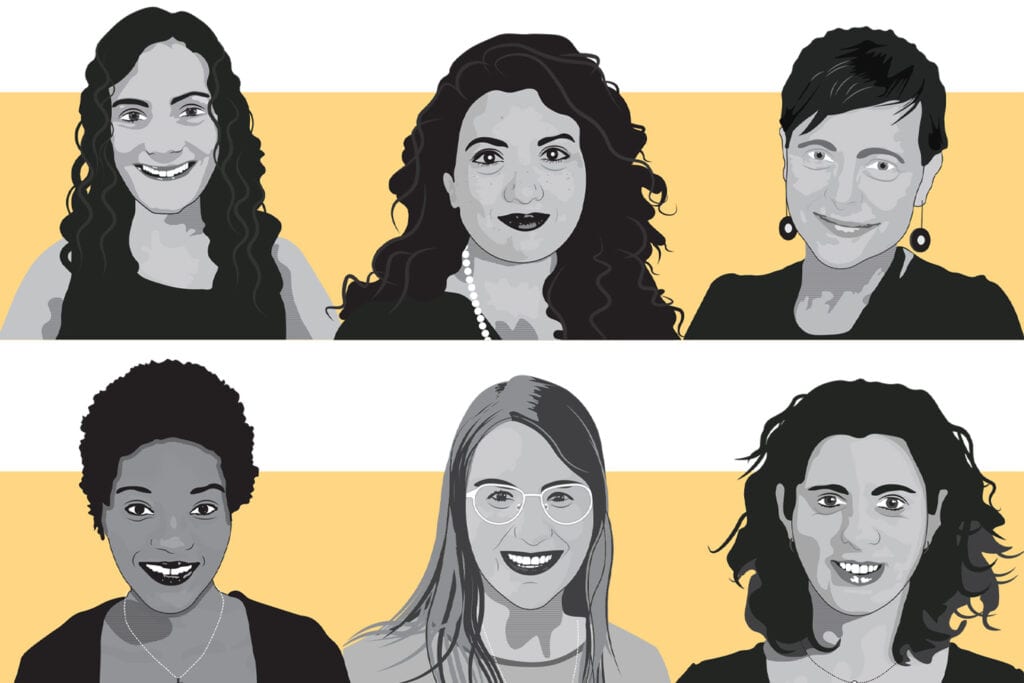
As part of our latest series of interviews for The Edit Magazine, we hear from a number of our specialist consultants from across the practice.
Here we speak to Associate Director Dr Becky Hayward about life as a people flow and smart space expert in our Analytics team. In particular, how she’s using analytics to improve people’s experiences in buildings, support their wellbeing and improve sustainability.

What is analytics?
In a nutshell, analytics is the use of data and different types of predictive modelling to inform insights and facilitate decision making. We started off using predictive modelling to resolve crowd issues in spaces that contain large volumes of people — such as new stadiums, or train stations — and that helped us optimise the design.
We then realised we could use this data-driven approach to improve people’s experiences and their productivity, as well as finding ways to spark spontaneous interactions. We now use it across a wide range of projects.
How much of your analytics work is data-based, and how much is drawn from psychology?
We incorporate both these elements, as they each have different strengths and weaknesses. Typically, what we do is more data-driven, but we’re increasingly trying to broaden our understanding of psychology and how it impacts human behaviour. A lot of research is coming out about the feedback loop between the spaces we live and work in, and the impact they have on our cognitive performance and wellbeing.
Factors that affect us include everything from ceiling height and room temperature, to light levels and smells — even the colour of the walls changes the way we think and feel. It’s fascinating.
We’re looking to use analytics to support wellbeing, improve sustainability and make the world a better place.
Is it an ever-evolving specialism?
Definitely. As well as the psychology, there’s also new technologies that change how we behave. For example, we now have to take smartphones into account when we’re working on masterplans, as when people are moving they’re likely looking at their phone and not what’s going on around them. This can change walking speeds, or increase the risk of people bumping into each other. But smartphones also have the advantage of helping people with wayfinding. So we have to be aware of evolving technologies, understand how we can use them and leverage the advantages they offer in our designs.
Do you find it hard to switch off your analytics brain?
Like most people in our team — and I’m not sure if it’s a product of our work, or if we’re just born this way — I can’t help but start looking at places through that lens, even in my downtime. I’ll go to an exhibition at a museum, or see a performance in a concert hall, and on the way out I’ll be watching how people are leaving to see if there are any areas of congestion. Everyone in our team has the same mindset. Wherever you go, you can’t help but look and notice.
Is analytics unique to Buro Happold in the engineering field?
Yes. Other consultants may carry out elements of our work, but the strength of what we offer is that we bring everything together. By collaborating with other disciplines and specialisms within Buro Happold, we can undertake the modelling, the testing, the data analytics and the consultancy, and then present a full picture back to our client.
The way we’re able to demonstrate our analytics is also a key differentiator. The outputs are highly visual, and we’ve developed a set of simple dashboards with slider bars that allow us to play out different parameters — such as more people in a space, or the backlog from a delayed train — and visually see the impact of the changes we make. That makes our work very easy to interpret.
Can you tell me more about the team behind this approach?
We all come from different backgrounds. There are a couple of engineers, as well as physicists, computer scientists, anthropologists, architects and transport planners on the team. One of our graduates even has a computational arts degree. I think this diversity, and as a result our ability to draw on a wide range of expertise, makes our analytics approach very creative. It’s also really interesting and valuable to work with people from such a variety of backgrounds.
How did you get into analytics?
I studied maths and biology, and my PhD research at Bath University focused on examining ant colonies. I was looking at how ants interact, what social networks they form, how they distribute resources, and using lots of modelling techniques to understand their efficiency.
When I finished, a friend told me about Buro Happold’s Analytics team, which Shrikant Sharma heads up. I approached him and we had an informal conversation, followed by an interview, and I joined the team as an intern. There’s definitely synergy between my PhD and what the team is doing — I graduated from looking at little ants to big people!
What’s been your favourite project to work on at Buro Happold?
There are so many, but it’s been a real privilege to work with the Natural History Museum on and off for the last five years. When they were refurbishing Hintz Hall, we helped them optimise visitor flow so they could keep the museum open during the works, and still deliver a really positive experience even though this central area was closed. During that time, the museum received great visitor feedback and an increase in donations, which they attributed to us providing a more streamlined and calm visitor experience. We’re now working with them to redesign the external gardens — and help make them a destination in their own right.
I also loved visiting The High Line in New York. That was a very exciting project to be involved with, and it’s rewarding to be able to see the outputs of our work at such a popular attraction.
Where do you go from here?
Even though we’ve worked on all sorts of international projects — from the Museum of the Future in Dubai, to the Hamburg Elbphilharmonie — I still feel like we’re at the tip of the iceberg of what can be achieved with analytics. We focus a lot on solving small term issues — be that cost-saving, crowd concerns, or even how businesses can reopen in compliance with social distancing post-Covid-19. But that’s just one part of the puzzle.
There’s so much data being generated around us, every second of every day, and I think the real power will come from tapping into that in a positive and transparent way.
We’re planning to link up with the other specialisms within Buro Happold, as well as external collaborators to use analytics to realise built environments that support mental health and wellbeing, improve sustainability, and make the world a better place for us all.












